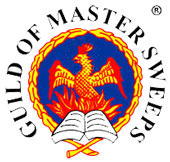Frequently Asked Questions
My chimney has suddenly started smoking. What could be wrong?
This could be caused by the flue being blocked by soot, mortar or maybe a bird’s nest. Call your local sweep to clean and smoke test the chimney before relighting the chimney.
Smoking is getting worse over time. What should I do?
Your flue is likely to be partially blocked by soot or mortar. Call a professional chimney sweep.
My fire smokes in certain wind directions and conditions. Why is this?
This could either be pressure variation, or downdraught. For downdraught, fit an anti-downdraught cowl which will stop the down drafting. Houses with cavity wall insulation can cause fire to be starved of oxygen, slowing the burn of the fire, stopping the fire from combusting; so an air vent will be required to supply the fire with oxygen.
What is downdraught?
Where wind, for various reasons, blows down the chimney. This prevents gases and smoke from rising up the chimney into the atmosphere, thus blowing smoking into the room.
Why does my fire smoke when the doors and windows are closed?
This is probably due to the lack of ventilation, which is causing the pressure to drop in the room. You need to add a vent through an outside wall.
I have a large opening fireplace that smokes most of the time.
A) The opening may be too big for the log basket, so try raising the fire basket or increasing the basket size. (B) You may have a blocked chimney; call a professional chimney sweep. (C) If you have downdraught, fit an anti-downdraught cowl.
What precautions should I take if I no longer use my chimney?
It is important to protect the chimney, especially in the winter. The rain/freeze cycle can cause structural damage to the chimney or adjacent brickwork. By fitting a chimney cap, rain and birds are prevented entry, but important nominal ventilation is maintained.
How often should I sweep my chimney?
The Guild of Master Sweeps strongly recommends that solid fuel systems are swept once a year, and gas fires every three years if the chimney has a cowl or yearly if no cowl is present.
I have been told I have a leaky flue, what does this mean?
This is also known as flue leakage. When the fire is on, fumes are smelt in other rooms within the building, even the neighbours sometimes. This has meant your mid-feathers (the row of bricks which separates each chimney), within the chimney have either fallen away or the mortar has eroded, leaving gaps within the brick work – allowing the smoke to leak from one chimney to another, which is a carbon monoxide risk. The best way to fix flue leakage is to have the chimney lined.
I am currently renting a house that has a working fire place. Is it mine or the landlord’s responsibility to maintain the chimney?
Most tenants are told by the landlord that if they want to use the open fire or stove, then they have to pay the chimney sweep directly and produce a chimney sweep certificate before using the appliance. Very few landlords pay for any maintenance on chimneys.
I don’t use my fireplace, but I still get drafts. How can I reduce them without breaking the bank?
To reduce drafts in a disused chimney, the most cost effective way of reducing the draughts caused by chimneys is to block the chimney by using a bin liner. Scrunch up newspaper into approximately 20-30 balls of paper and fill up the liner. Tie the bag up, then push it up the chimney. This should reduce any drafts considerably!
What should I do if I suspect that I have a chimney fire?
In the event of a chimney fire, alert everyone – including the neighbours. Get you and any other occupants out of the house straight away, closing internal doors as you leave. This will help to starve the fire from oxygen. Call the fire brigade immediately. Call a chimney sweep to clean and inspect the chimney to ensure it’s still safe to use after the fire.


